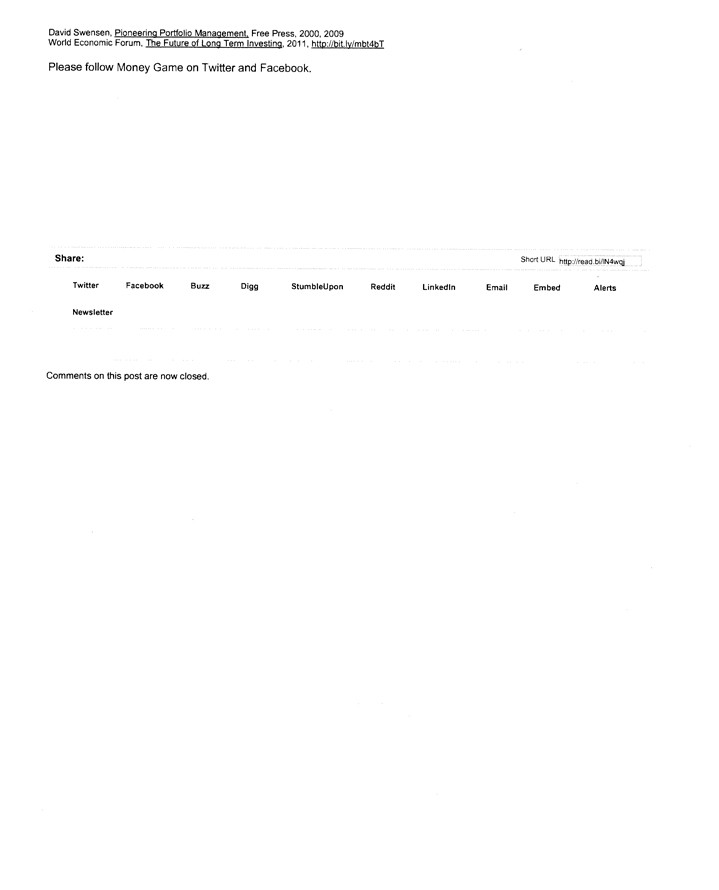Six Essential Investment Themes To Consider For Your Portfolio
Post on: 1 Июнь, 2015 No Comment

Consistent with my previously posted 2014 Market Outlook. I provide the following portfolio management themes for careful and thoughtful consideration in the New Year remembering that any investment portfolio should be custom tailored to an investor’s specific financial goals, income needs, investment time frame and tolerance for risk.
- Reset Expectations for Market Growth Potential in 2014
Investors may need to reset their expectations for stock market growth potential in the New Year coming off of a return of more than 32% for the S&P 500 index in 2013 and a cumulative total return (on a weekly basis ) of over 169% for this index from March 16, 2009 – December 27, 2013.
As you may recall, I have forecast a potential high, single-digit gain for the S&P 500 index overall for 2014, following a bumpy first quarter. Not so long ago a total return in the high single digits was considered a good year for the stock market. Now this type of potential result has been greeted with labels such as “a market breather” or “a bullish forecast.” Quite to the contrary, I believe that such a return in 2014 would provide a signal of strength for the next leg of this particular cyclical bull market cycle – although it might be a bit of a bumpy ride at times throughout the year.
- International Equity Markets ( not Emerging Markets) may outpace Domestic Equity Markets overall in 2014
I believe that Europe is at a similar inflection point that the U.S. was at back in 2009 when the Federal Reserve became increasingly more accommodative, the stock market downturn hit a bottom and the U.S. economy started to slowly improve. As the ECB continues upon its path of accommodation and the euro zone economy continues to slowly grow out of its own most recent recession, I would anticipate upside growth potential not only for European stock markets but also for other international developed stock markets that would benefit from continued U.S. and European economic improvements.
- Review Asset Classes that have Historically Benefited from Improving Economic Conditions and Rising Interest Rate Environments
While I do not believe that the Fed is going to raise interest rates, or dramatically reduce the size of its balance sheet, anytime soon, it is clear that the perception of rising interest rates has changed in the marketplace and thus it is appropriate to consider making adjustments to investment portfolios to brace for the reality that interest rates and/or yields will inevitably be rising – and in the case of yields, have already risen. Recognizing that past performance is not a guarantee of future results, according to research report from Capital Innovations, LLC entitled, “Most Bonds and Some Stocks Could Suffer from an Increase in Long-Term Rates,” areas such as senior loans/floating rate notes, convertible securities, high yield fixed income and certain sectors of common stocks (such as materials, information technology, energy, consumer discretionary and industrials) have generally benefited historically from rising interest rate environments.

- Be Wary of Fixed-Income Asset Classes that currently reside on the Fed Balance Sheet
The Federal Reserve balance sheet has ballooned to more than $4 trillion and contains a large number of U.S. Treasurys and mortgage bonds. Even if the Fed does not sell any of these bonds off of its balance sheet in 2014, the reduction in the amount of these bonds that they will be purchasing each month (i.e. the infamous “tapering” process ) will have an impact on the prices of these bonds, although not to the same extent as when they will actually start to sell these bonds back into the marketplace – likely not until 2015 .
- Remember that Bonds can still be Effective for Income and Growth-oriented Portfolios
Staying on the fixed-income theme, it has long been my contention that, for income-oriented investors, bonds can provide for a dependable and consistent stream of income, and principal protection when held to maturity. Bonds, whether they are municipal, government or corporate bonds, can also provide for compounded growth opportunities when the income received from the bonds is reinvested.
Additionally, for growth-oriented investors, fixed-income securities can provide investors with downside protection and diversification within a growth portfolio especially during periods of heightened stock market volatility when additional, measured, short-term flights to quality are likely.
In my view, investors should be careful not to miss out on the income and diversification opportunities offered by bonds by trying to time future, potential changes in interest rates. History has shown us that trying to time the market, or time interest rate increases or decreases, is often an exercise in futility. With this said, it is important to understand that when interest rates do increase, bond prices may fall and yields may rise.
However, rising interest rates should not impact the interest that bond holders receive on their bond holdings nor should they change the ability of these investors to receive par value on their bond holdings at maturity. Bond fund investors, on the other hand, may see the interest they receive on their fund holdings change in a rising rate environment and will not receive par value at maturity as there generally is no set maturity on bond funds.
While allocations to bonds may vary based upon market conditions and investor objectives and risk appetites, certain types of bonds can still find a home in most investment portfolios throughout most market cycles. Investors are encouraged to work together with financial professionals with years of bond market experience to conduct the due diligence necessary to find appropriate bond strategies to meet each investors risk profile, income objective and investment time frame.
- Look for areas of Low Correlation in Non-traditional Asset Classes and Sectors
Investors should continue to consider adding a wide range of asset classes, including but not limited to real estate investment trusts (REITs) and convertible bonds, to their respective portfolios in an effort to find pockets of attractive risk-adjusted return opportunities given my forecast increase in market volatility during the course of the first quarter of 2014 (at least).
With this said, I do believe at this time that stabilizing, underlying economic fundamentals, and the activist nature of the Federal Reserve, will prevent any pullback that may take place in the stock market from escalating into a more serious market downturn or correction. Gold, and other precious metals such as silver (in addition to certain traditional bond asset classes ), could also be used as a volatility hedge by investors during these stock market pullback periods, which would help gold, in particular, to bounce back from its recent lows.
Special Offer: Total return of all recommendations in Forbes Dividend Investor in 2013 is 25% higher than the S&P 500, Average yield of picks: 5.7%. Click here for a 30-day risk-free trial,
Disclosure : Hennion & Walsh Asset Management currently has allocations within its managed money program and Hennion & Walsh currently has allocations within certain SmartTrust Unit Investment Trusts consistent with several of the portfolio management themes for consideration cited above.














